Disney Imagineer Scott Trowbridge and I are sitting next to the Millennium Falcon. The ship is scarred with blast marks and rust; by all indications it’s the same ship that made the Kessel Run in less than 12 parsecs. You know: a piece of junk.
Of course, we’re not in a galaxy far, far away, we’re in Anaheim, California, and the behemoth near us isn’t a real spaceship. But starting Friday, when Disney’s new Star Wars: Galaxy’s Edge opens to the public, Trowbridge — the creative force behind the land — wants guests to forget about that for a while.
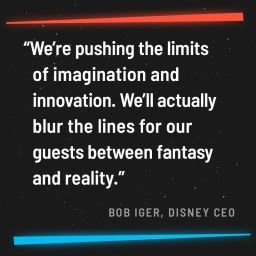
“We want the place to feel deep, so that your relationship with it can also have that kind of depth,” Trowbridge says, motioning around what Disney calls the Black Spire Outpost — a bustling trading port on the planet Batuu. Trowbridge is speaking as if everything around him is, in fact, real. He’s doing this not just because Disney’s parks run on the belief in Disney magic, but because all of it must feel real in order to sell this new land to millions of Star Wars fans (a finicky bunch) and Disney park-goers (even finickier).
That’s especially important now. This December, the Skywalker era of Star Wars will be over. Disney is now trying to prove that the franchise is much more than just the family drama of Luke, Leia and descendents like Kylo Ren. It’s betting that Galaxy’s Edge will help do that.
Disney calls the land the company’s largest expansion at its parks ever. Its Imagineers are using innovative technology and spare-no-expense design to wrap guests into an experience. There will be a ride that allows guests to fly the Millennium Falcon, shops that allow them to build their own lightsabers, and restaurants that will serve galactic fare like fried Endorian tip-yip — or, as we like to call it, chicken.
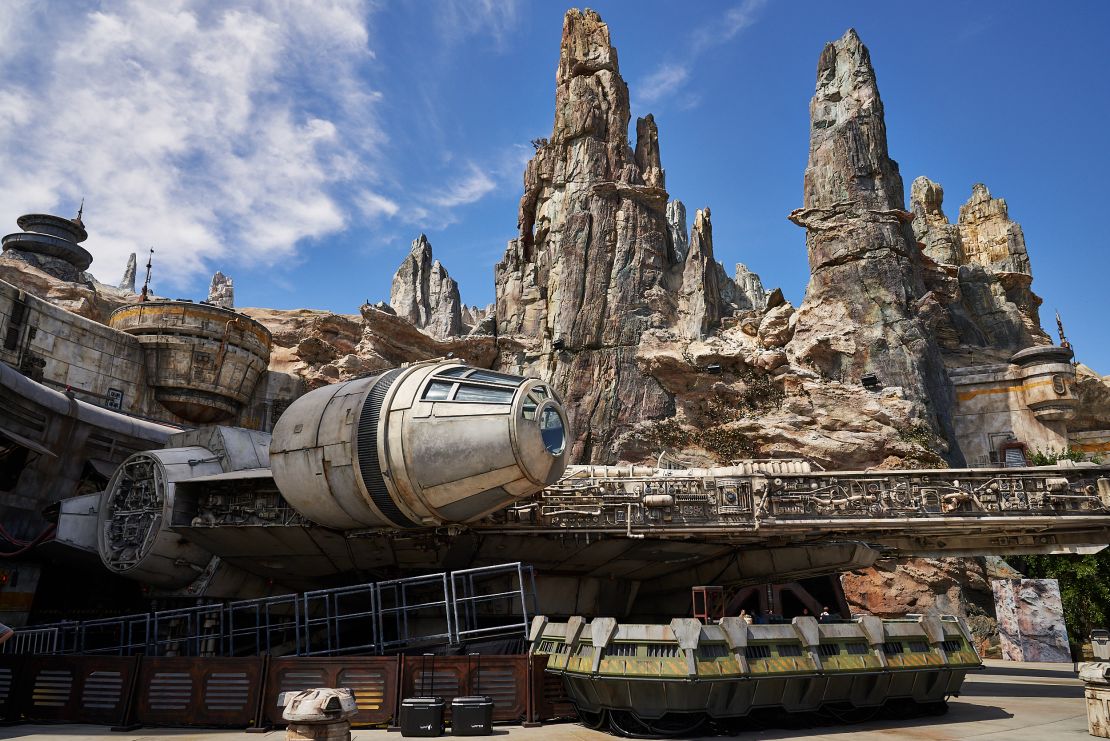
For Disney, Galaxy’s Edge represents an investment in the future, but it’s also a reflection of something that has been one of the company’s core strengths since it was envisioned by Walt Disney himself.
For most of its history, Disney’s success as a media powerhouse has relied on what company executives and MBA professors have long referred to as “synergies” — complementary businesses that don’t just thrive on their own, but also all work in service of one another. Other companies have of course adopted similar strategies and used their various subsidiaries in this way. But Disney has practically made it into an art form.
Take Marvel, which Disney has owned since 2009. First Marvel makes a comic book series, which creates characters and stories and develops a fanbase for them. Then Disney makes a movie out of those comics. The stars of that movie go on “Jimmy Kimmel Live,” the main late night show on ABC, which Disney also owns, to talk about it. Then, having proved that Marvel characters can thrive on the screen, Disney makes Marvel TV shows and sells them to rivals like Netflix. Later it makes a new movie, and uses “Monday Night Football,” the biggest show on ESPN, which Disney also owns, to unveil a trailer. Then Disney decides to start a Netflix competitor, and it uses new Marvel shows as well as those old Marvel movies (which it ensures people won’t be able to see elsewhere) as a draw. All the while, it’s running special cruises on its cruise line featuring characters from the Marvel movies, creating whole new theme lands dedicated to Marvel — and, of course, making new comics and toys that reference the movies.
The theme parks are one of the most important gears in Disney’s synergy machine. It’s the same basic idea: create or repurpose a story people love, build a deeper connection through an attraction, sell merchandise that lets them take the experience home, maybe create a blockbuster film franchise out of one of the rides, make a ton of cash, repeat.
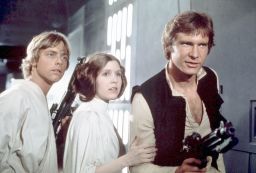
With Galaxy’s Edge, Disney can move further toward realizing the full potential of the $4 billion it spent in 2012 to acquire Lucasfilm, which owns Star Wars and Indiana Jones. And it can — it hopes — future-proof Star Wars even as the Skywalkers’ family drama comes to an end. If it works, that strategy will bring generations of new fans in to Star Wars, helping the company compete against Netflix and other rivals in a splintered and hypercompetitive media landscape.
It’s not just about synergies, though. For a long time, Disney’s media networks division, including ABC, ESPN and the Disney Channel, has been the company’s biggest money maker, but it has come under pressure in recent years. Disney may one day soon need the theme parks to pick up some of the slack.
Of course, for that to happen, they’ll also need fans to embrace a Star Wars story that doesn’t include the Skywalkers.
‘Everything has to feel real’
In building Galaxy’s Edge, Disney reportedly spent $1 billion to fill up 14 acres inside Disneyland with state-of the-art rides, food and merchandise that can be personalized. (A second location, in Disney World, opens at the end of August.) Guests can quench their thirst with blue milk, one of Luke Skywalker’s drinks of choice, and visit Oga’s Cantina — the first bar in Disneyland other than the private Club 33 to serve alcohol. Custom bottles of Coca-Cola, served in the land, will look like little droids and feature labels written in Aurebesh — a fictional language used in the film franchise.
“For those guests who want to play Star Wars with us, we have ways,” Trowbridge said. That deeper personalization will be made possible by technology including the Play Disney Parks app, which guests can download on their smartphones, and the resort’s all-in-one bracelet, MagicBand.
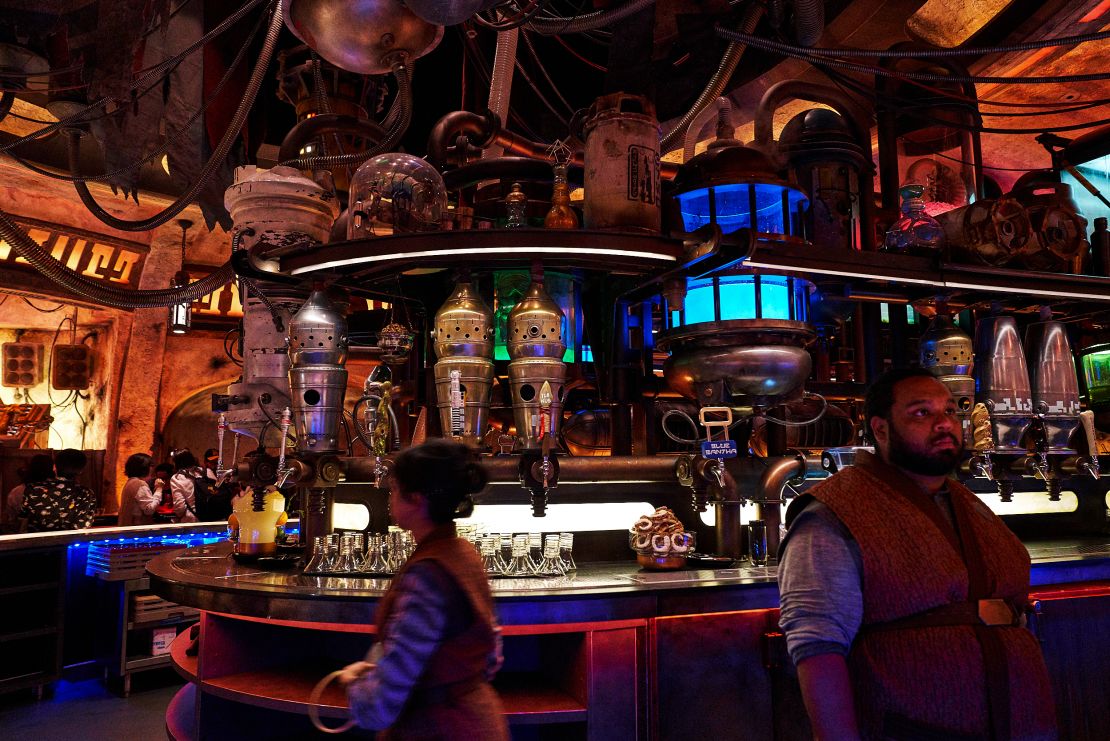
When guests pilot the Millennium Falcon, which they’ll do on the ride Smuggler’s Run, their choices will impact their experiences in the rest of Galaxy’s Edge. For example, if a guest loses cargo on the ride, Trowbridge said, the bartender at Oga’s Cantina might issue a warning: “I’d watch out if I were you, because I think your name’s on the list of the local bounty hunter.”
Smuggler’s Run will also use real-time video rendering technology created by legendary visual effects company Industrial Light & Magic, a branch of Lucasfilm. That technology will react to how the guests use the ride’s 200 cockpit controls.
Think of it this way: You could have gone to Disneyland and ridden Peter Pan’s Flight any number of times over the past 64 years — but you could never be Peter Pan. At Galaxy’s Edge, Disney wants you to feel like Han Solo.
And that’s only one of the land’s most innovative rides.
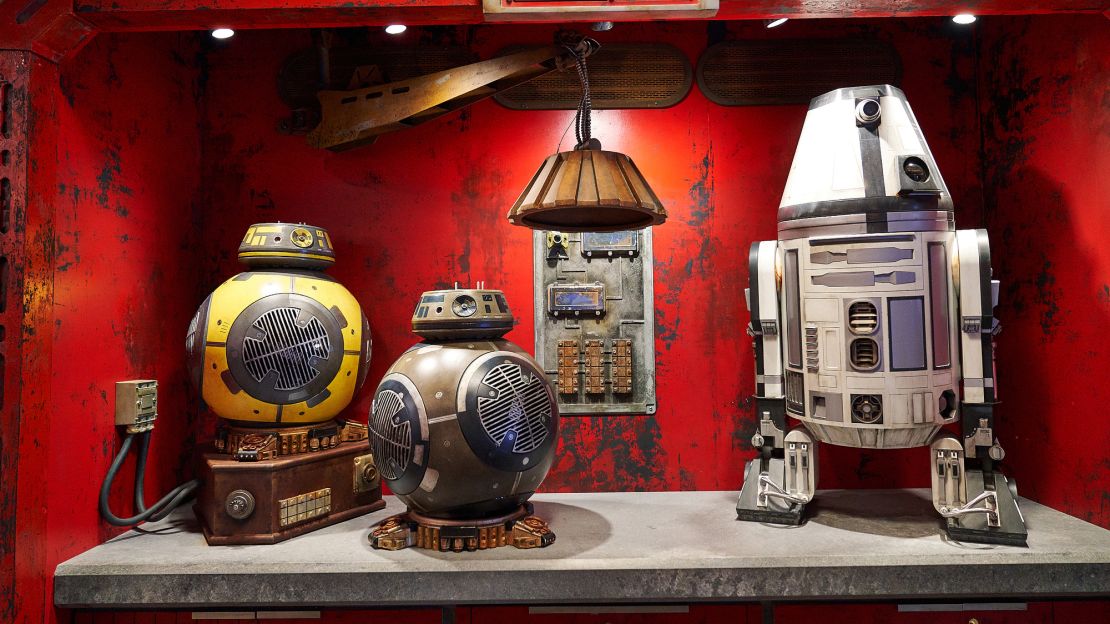
Rise of the Resistance, which will open later this year, is what Trowbridge calls the “biggest attraction we’ve ever built.” Disney hasn’t revealed much about the ride, but we do know it will have multiple ride systems, full-sized AT-AT Walkers and even a John Williams score.
Disney CEO Bob Iger calls the ride “the most technologically advanced and immersive attraction that we have ever imagined.”
“We’re pushing the limits of imagination and innovation,” he said at Disney’s annual shareholder meeting in March. “We’ll actually blur the lines for our guests between fantasy and reality and put them right in the middle of the rebellion and give them an active role in a fight against the First Order.”
For some guests in the future, the experience will be so encompassing that they won’t even leave the Star Wars galaxy to sleep. Disney is planning a full-service Star Wars-themed hotel, which will one day open near Disney World’s Hollywood Studios and will have characters and storylines as well as a starship design.
“Everything has to feel real,” Trowbridge said. “We want there to be stuff for you to surprise you, to make you feel like you’ve actually walked into this universe of Star Wars.”
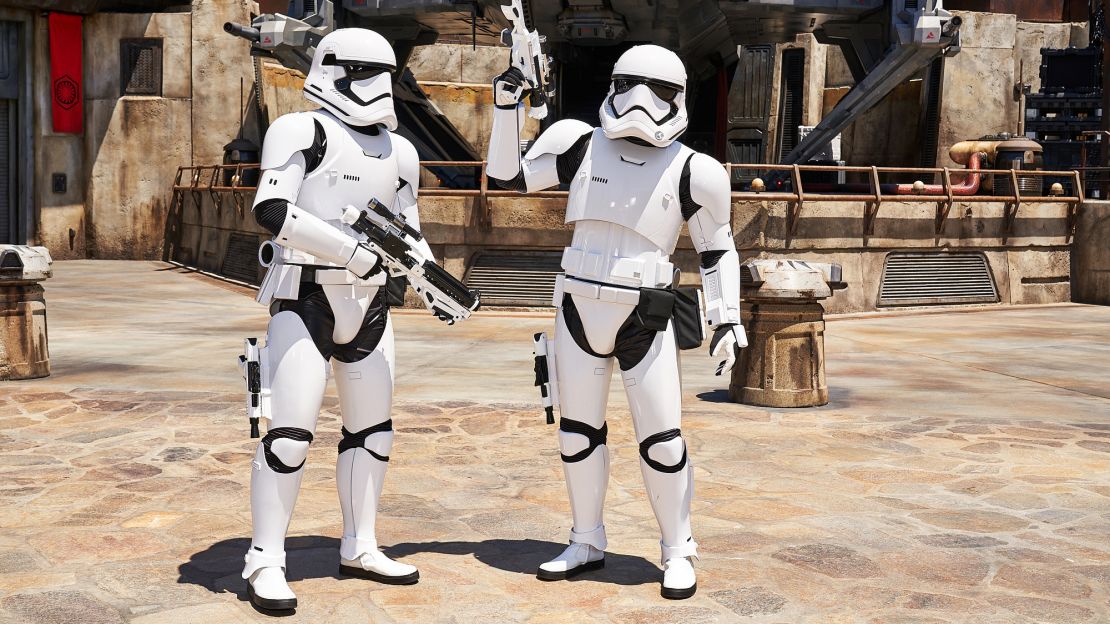
From Sleeping Beauty’s Castle to the Millennium Falcon
Disney could’ve just created a Millennium Falcon ride and lines likely would have been hours long. Instead, the company created an entire world with different locales and characters. Rather than touring familiar places like Tatooine or Cloud City, guests will find themselves in Batuu. Instead of Harrison Ford’s Han Solo, they’ll find an animatronic version of Hondo Ohnaka, a pirate introduced in the “Star Wars Rebels” animated series, signing park-goers up for Smuggler’s Run.
“There’s a risk that people will get in there and go, ‘Hey, where is Luke Skywalker? Where’s Darth Vader? I want to see that,” said Robert Niles, editor of ThemeParkInsider.com. “If people come away disappointed because they’re not just reflecting an old experience then that could create a bit of a chilling effect on trying to expand the franchise.”
So why not just create a land full of characters and hot spots that fans already know and love?
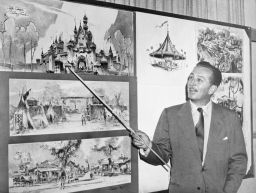
Well, it’s actually a smart move by Disney to expand the series beyond the family drama of the Skywalkers. Visitors build a stronger connection to the brand when they are front and center as opposed to an observer in this Star Wars universe, Niles said.
“Now, if a Star Wars show comes on Disney+ and the characters say, ‘we’re going to Black Spire Outpost,’ consumers may say, ‘Hey, wait a minute, I’ve been there before,” he said. “Disney wants to be directly relevant to every consumer, every day.”
Disney not only wants to boost its theme park revenue, Niles said, but also the company wants Galaxy’s Edge to have an effect on other ancillary parts of the company.
“It’s all about, at its heart, Disney positioning itself as a lifestyle brand,” he said. “It is part of your lifestyle so much so that you incorporate Disney in pretty much everything you do, from making Mickey Mouse waffles in the morning to watching Disney+ at night.”
This general idea is nothing new for Disney. The company’s theme parks have long been one of the strongest extensions of Disney’s corporate universe, showcasing its existing intellectual property and serving as a breeding ground for new storylines and characters.
In some cases, the theme parks market films and other content. For example, Adventureland, one of Disneyland’s original themed lands, was based on Disney’s award-winning nature film series, “True-Life Adventures.” Walt Disney himself named Disneyland’s focal point “Sleeping Beauty’s Castle” in 1955, four years before the company was due to release the animated feature “Sleeping Beauty.”
In other cases, the complementary relationship has worked the other way, with the theme parks feeding content to Disney’s vast array of other businesses. “Pirates of the Caribbean” started as a ride in 1967. More than 35 years later, it spawned a $4.5 billion film franchise that then influenced new rides around the world. Disney has also tried this model with “The Haunted Mansion” and will attempt it again next year with “Jungle Cruise,” a film starring Dwayne Johnson and Emily Blunt.
Disney’s slate of upcoming films also corresponds with two of its major parks projects, Galaxy’s Edge and Pandora — The World of Avatar, which opened in 2017. The company announced earlier this month that it would alternate releases of new “Star Wars” and “Avatar” films each December between 2021 and 2027.
Galaxy’s Edge is also a major investment in the future of Disney’s parks division at a time when that division looks more important to the future of the whole company.
Profits in Disney’s media networks hit a high in 2015, but have since declined 15%, likely due to cord-cutting and rising programming costs, neither of which promise to improve soon.
In that same period, profits for Disney’s parks and resorts have gone up 47%.
It’s no wonder, then, why Disney is investing so heavily in the parks, even beyond the Galaxy’s Edge expansion. It’s adding new attractions to Epcot including a “Guardians of the Galaxy” roller coaster and a ride based on “Ratatouille,” building new Marvel-themed areas at Disney’s California Adventure, Disneyland Paris and Hong Kong Disneyland and a “Zootopia”-themed land in Shanghai’s Disneyland Park.
“This has become one of our most profitable businesses as we’ve expanded around the world. And that has justified greater investment,” Iger said in an interview with CNN Business’ Christine Romans.
As its theme parks become more important to its bottom line, Disney also needs to invest in them in order to keep its competitors in that space at bay. Comcast’s Universal Studios shook up the theme park industry in 2010 with the Wizarding World of Harry Potter, an interactive land set in the story of Harry Potter.
“I think Wizarding World encouraged Disney to be as aggressive as they are being with Galaxy’s Edge,” Niles said. “Disney doesn’t want anyone to say, ‘Oh, Universal’s the creative leader in this industry because Harry Potter was so good.’”
The Wizarding World of Harry Potter allowed guests to purchase magic wands for use in the park, drink Butterbeer, the frothy butterscotch-flavored beverage from the series, and ride the Hogwarts Express train. It was a gamechanger in the theme park industry, and Disney didn’t want to be outdone, Niles said.
“With Harry Potter it no longer became acceptable for a top-level attraction just to be a standalone ride in this kind of mildly decorated area. You had to create an experience that brought you into a world from the moment you stepped foot into it,” he said. “So Disney had to create something that was not just their most immersive thing, but the most immersive thing.”
Trip Miller, a Disney shareholder and managing partner at hedge fund Gullane Capital Partners, describes theme parks as the “Rock of Gibraltar” for Disney — safer and more stable than the media side of the business.
“The media side is just so rapidly changing, so whether Galaxy’s Edge turns out really well for them or it’s just kind of a mediocre capex spend, I think there’s very little risk,” he said.
May the Force be with you… Always
We already know what Star Wars is capable of.
The space saga has made more than $9 billion at the global box office since 1977. Accounting for inflation, five of the top twenty highest-grossing films in North American box office history are Star Wars movies. The original “Star Wars” alone made more than $1.6 billion domestically — second only to “Gone with the Wind” in the United States after inflation.
Those numbers don’t include the costs to produce and market the films, but they also don’t account for all the other ways Disney has already made money off the universe, like TV shows, licensing, home video sales and merchandise. When “Force Awakens” hit theaters in 2015, analysts estimated that the merchandise tied to the film could generate $5 billion in sales within a year.
Jeff Bock, a senior box office analyst at Exhibitor Relations, wouldn’t take a guess at how much the brand is now worth to Disney, but said the company “wouldn’t sell ‘Star Wars’ for $25 billion at this point.”
Of course, because it’s Disney, there are several other major Star Wars projects in the works beyond Galaxy’s Edge. There are new films coming from “Game of Thrones” creators David Benioff and D.B. Weiss. And there’s a new live-action series: “The Mandalorian,” which follows a Boba Fett-esque bounty hunter. “The Mandalorian” will air on the company’s upcoming streaming service, Disney+ — part of its strategy to use its huge library of beloved content, characters and worlds to draw users to Disney+ and away from competitors like Netflix.
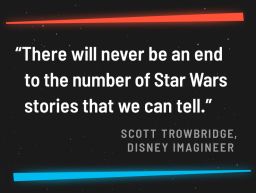
But the franchise is now at an inflection point. Disney would very much like Star Wars to live on past the nine movies that George Lucas envisioned and the family he created. Galaxy’s Edge is a physical manifestation of that hope and its strategy, said Suzanne Scott, an assistant professor at the University of Texas’ Moody College of Communication.
“If Galaxy’s Edge had been set on Tatooine, fans would have enjoyed scrutinizing every detail against its cinematic counterpart,” she said. “In creating Black Spire Outpost, they get all the appeal and familiarity of a spaceport/border planet, plus all of the creative freedom.”
That creative freedom allows Disney and Trowbridge to do more than just create a new world for Star War fans to enjoy — the land also presents a stepping off point for all kinds of new Star Wars experiences, memories, stories and, of course, profits too.
“We have so many stories we want to tell,” Trowbridge told me as we sat looking around Galaxy’s Edge. “That’s one of the great things about Star Wars. There will never be an end to the number of Star Wars stories that we can tell.”
Art Direction: Allie Schmitz
Editors: Annalyn Kurtz and An Phung
Photo Editors: Brett Roegiers and Natalie Yubas










